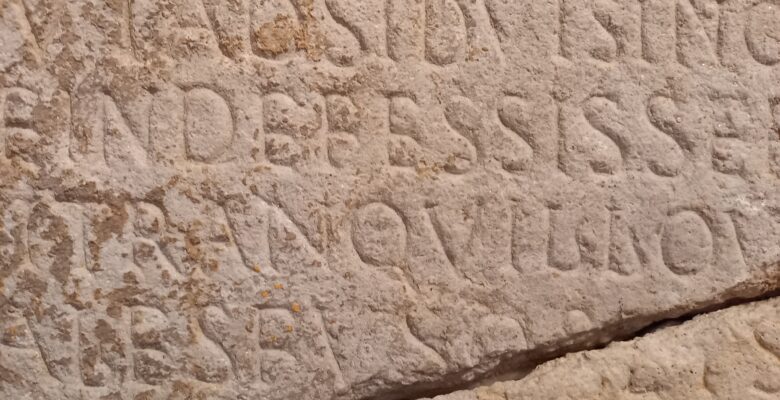Carmina for the Nymphs – Reading the verse inscriptions of Aquae Iasae
by Chiara Cenati and Csaba Szabó
“The poets say that the Nymphai (Nymphs) live for a great number of years, but are not altogether exempt from death.” Pausanias, Description of Greece 10. 31. 10 (trans. Jones)
It was a common knowledge in classical antiquity, that water springs (hot and cold) were protected and populated by the Nymphai, the nymphs. Elegant, female figures represented in the intimate moment of bathing and changing their clothes or holding the symbols of the natural environment (reeds, lilies). The cult of the nymphs is well attested in the Danubian provinces too, where several hot and cold springs were transformed into healing sanctuaries and bath complexes, creating a rich network of religious pilgrimage and tourism.
On 9th of May Chiara Cenati, epigraphist, postdoctoral researcher in the ERC-funded project MAPPOLA, Csaba Szabó, research assistant of the University of Szeged and Ernő Szabó, PhD candidate of the University of Pécs visited the site of Aquae Iasae in Pannonia (today Varaždinske Toplice, Croatia). The picturesque town in close vicinity of the mountains and the sources of hot water is still one of the major tourist attractions of the region because of the hot springs known since prehistoric times. The settlement has an unprecedented historical continuity due to the 58°C water, which is still used in contemporary medical care and recovery of the patients.
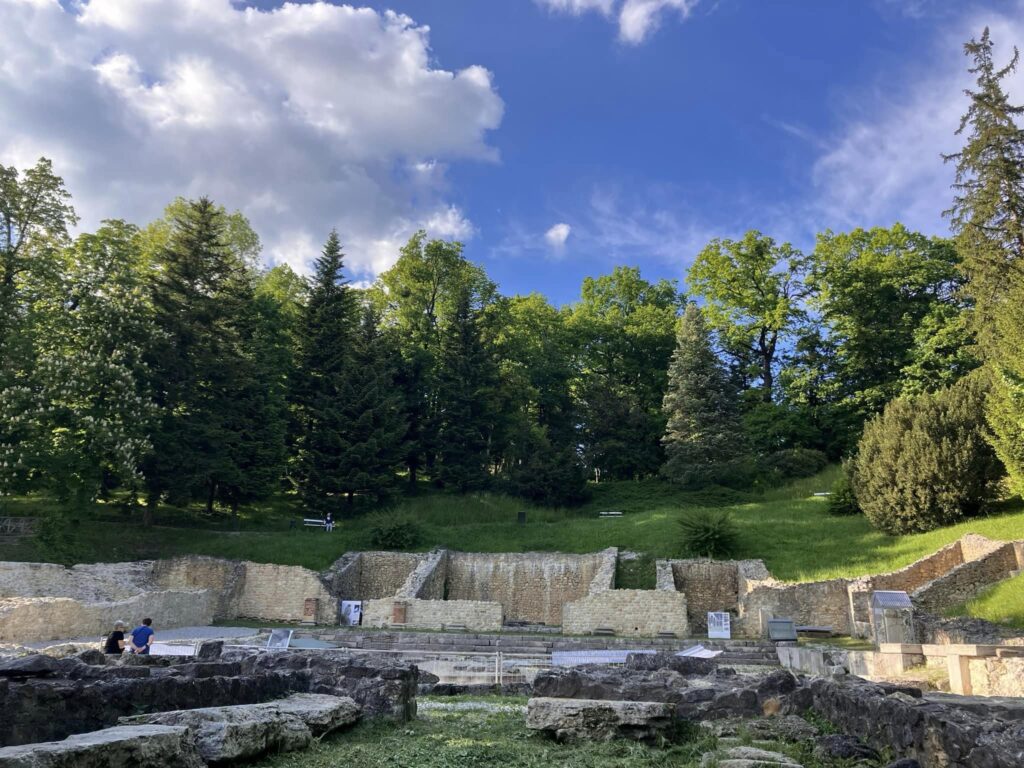
The ancient healing sanctuary is not far from the museum and the hospital as well, where thermal water is used for therapeutic purposes. The bath complex from the Constantinian period is well preserved, with impressive wall paintings and wall-heating systems (tubuli). The site was one of the main healing sanctuaries and pilgrimage sites in the Danubian provinces, producing a large number of epigraphic and figurative monuments dedicated to the local Nymphs (probably a reinvented, pre-Roman tradition), Aesculapius, Minerva, Iuno, Jupiter, Sol or Serapis.
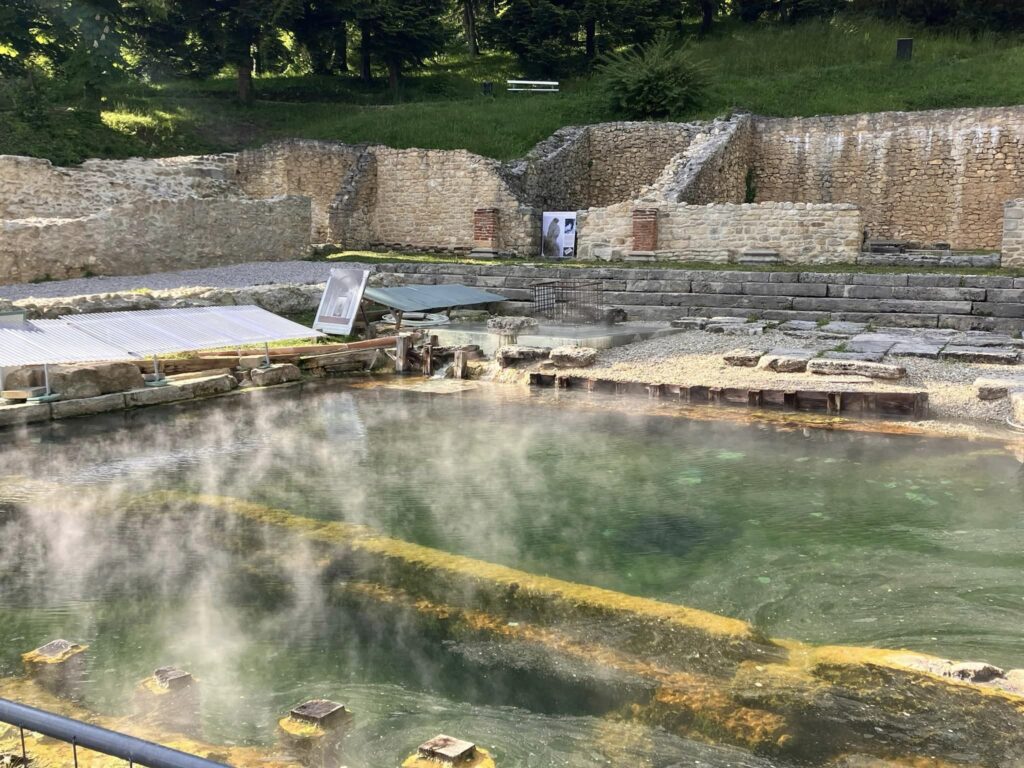
The main aim of our visit was the physical examination, documentation and digitisation (photo3D) of several fragments of verse inscriptions dedicated to the Nymphs of Aquae Iasae. These inscriptions belong to the few, monumental carmina known from a cultic, religious context and have several, intriguing and challenging epigraphic details. The texts written on marble plates were displayed on the walls of the porticus surrounding the warm water basin. We have to imagine these poems as pieces of art, that celebrated the medical properties of thermal water and the Nymphs protecting the place and decorated the Constantinian complex exactly as the beautiful statues of the Nymphs, also found here, that perhaps embellished the baths and the sanctuary. After a preliminary reading, the poems on the fragmentary slabs do not seem to differ from each other in terms of style and content. Nevertheless these are written in different metrical schemes: the very classical hexameter and iambic metres.
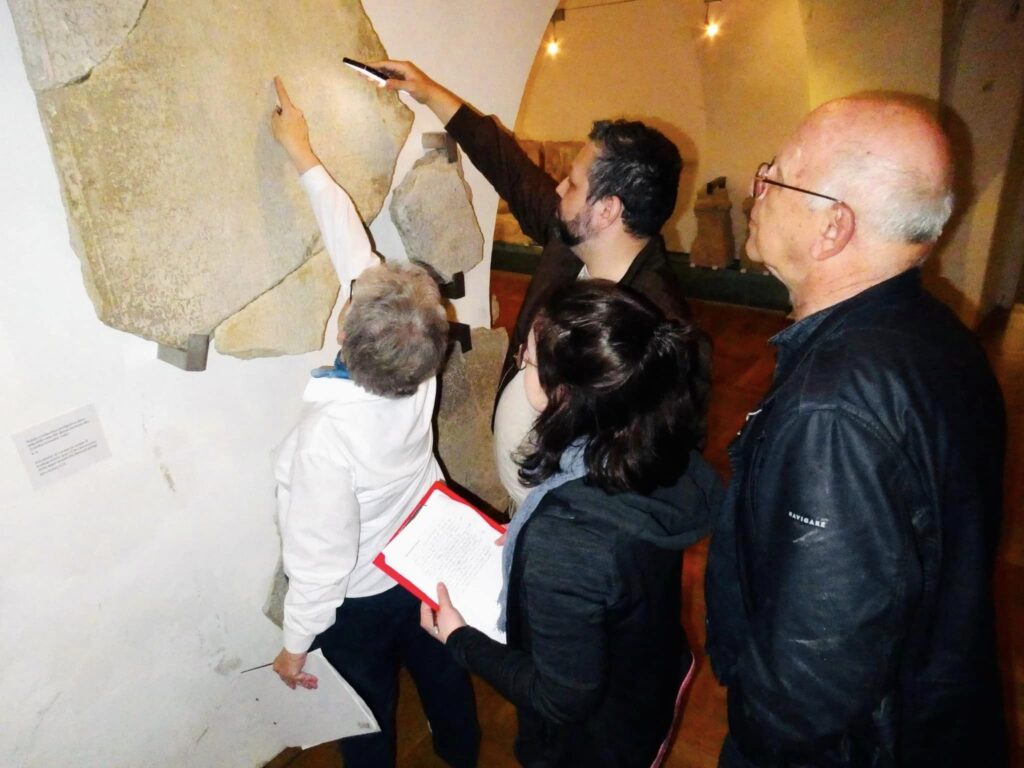
One epigraphic fragment belonging to this monumental complex was already known. It was taken to the Archaeological museum of Zagreb, where it is still kept, and it was published in Antike Inschriften aus Jugoslavien (Nr. 470). Four new fragments were partially published by Bruna Kuntić-Makvić, Ante Rendić-Miočević, Marina Šegvić and Igor Krajcar in 2012. After the extraordinary discovery, they were moved to the local museum, which concentrates in a small space all the beauty and uniqueness of the inscriptions and the sculptures from the sanctuary. The fragments received a special treatment and gained a wall to be displayed, in the attempt to reproduce the original disposition in the porticus (which will be anyway revised in the forthcoming publications).
Over 10 years later, we joined the first editors in order to read together the verses, letter by letter. Use of lamps with side light allows a clearer reading of the letters. The reading is often made harder by breaks on the stone or incrustations, which in the case of these slabs are due to the sulfureous thermal water.
Measuring the size of the letters, the distance between them and the spaces between lines and observing the paleographical features helps to define whether the fragments belonged to the same slab or not. The different text layout which usually goes together with a different metrical scheme is certainly also a decisive element to identify a new slab.
In case of difficult or uncertain readings, it is always useful to have good pictures of the detail from different perspectives and, something that might seem a bit outdated, but is actually very simple to obtain and gives reliable results, a paper squeeze. Unfortunately, in this circumstance, it was impossible to perform a paper squeeze for two reasons: the fragments are fixed on the wall with metal clamps and they are partially still covered by a layer of incrustation, that would make the reading on the squeeze very hard. The impossibility of squeezing the fragments was well replaced by a photo 3D made by Ernő Szabó. Seeing the stone from different angles will help the study of the inscription during the edition phase. The 3D picture will then be stored in the MAPPOLA database and made available to all users who would like to read the text and see the inscription on a high resolution picture.
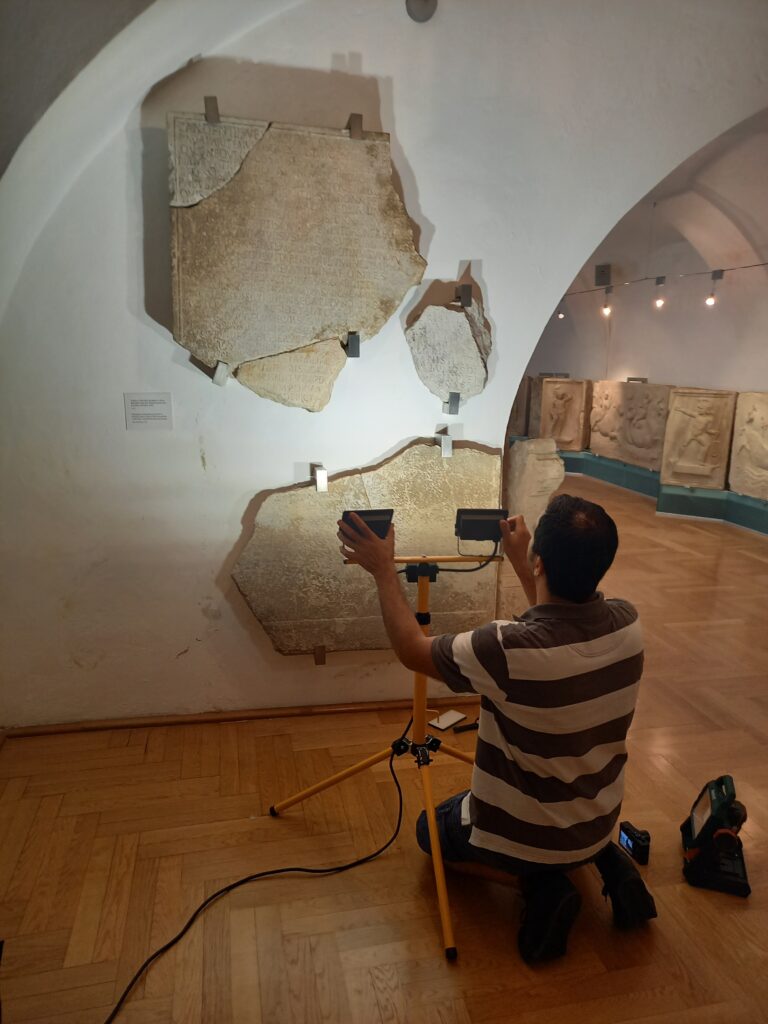
The new autopsy helped to clear up uncertain readings and confirm old ones. This will lead to a new and improved edition, which will be published by our Croatian colleagues and will serve as a basis for a further research on verse inscriptions for the Nymphs in the Danubian provinces which will be carried out by Chiara Cenati and Csaba Szabó.
Of course, we cannot reproduce the unpublished texts here – you can find a preliminary transcription in the Epigraphic Database Clauss-Slaby (EDCS-72400238) –, but, just to give a foretaste of how stunning these carmina are, we show you how few lines of the biggest fragment would sound:
Candentes vernantur aquae quas lucid[—]
The boiling waters flow hot, that a shining (?)
naturae hic fervet opus ubi gurgite multo
crispificas movet ignis aquas adque ardore
Here the work of nature glows, where the fire moves in a large stream the wavy waters and with its heat…
The fragmentary hexameters give a vivid and realistic image of how hot the water of the springs in Aquae Iasae was – and believe us, who tried it, – you would not like to dive in it, neither in winter. Words and adjectives to describe the water are carefully chosen and the poetic intention reaches the point of creating neologisms. These verses are part of a long text of which circa 20 lines are preserved, and which was followed by similar ones, displayed next to each other in the Constantinian porticus.
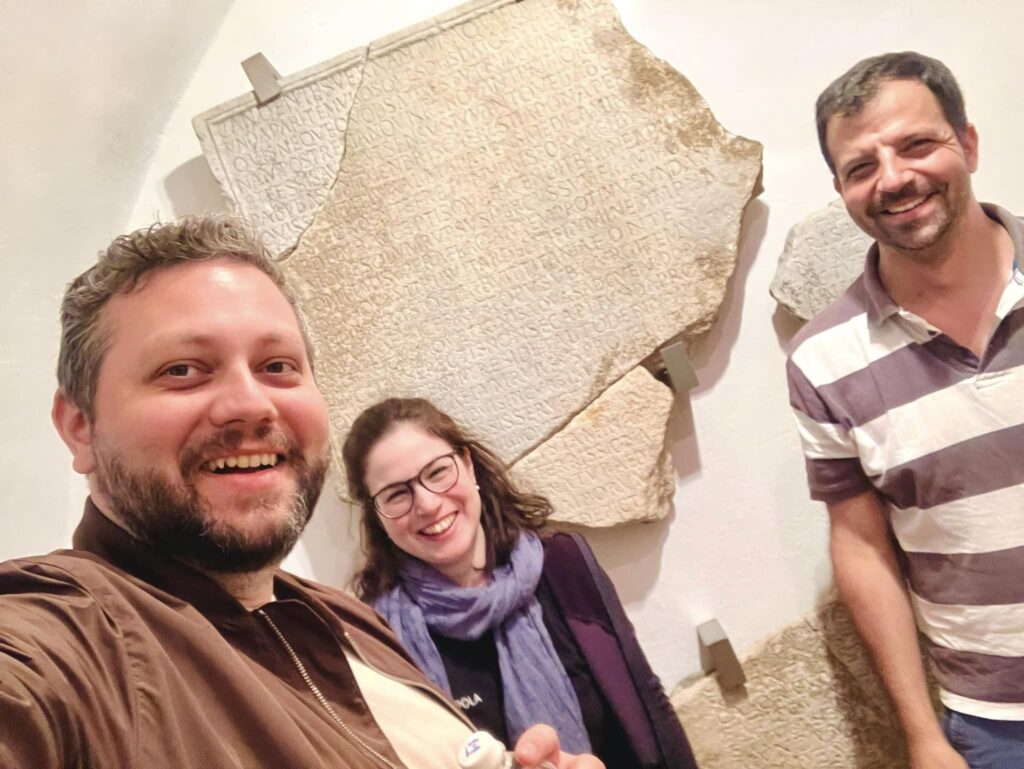
The site is indeed, still an inspiring one in its ruins and the hot, sulfurous water, which somehow reminds us, that the Nymphs represented so elegantly on the local reliefs are actually not dead, as Pausanias suggested, but still waiting for hymns and dedications as the verse inscription or the Orphic hymn reads: “Nymphai (Nymphs), who from Okeanos (Oceanus) famed derive your birth, who dwell in liquid caverns of the earth . . . who nourish flowers . . . who in meadows dwell, and caves and dens . . . who swiftly soar through air, fountains, and dews, and winding streams your care . . . and gentle course through flowery vales to glide . . . whom woods delight . . . whose streams exhale the breeze refreshing, and the balmy gale: with goats and pastures pleased, and beasts of prey, nurses of fruits . . . whom oaks delight, lovers of spring.“
Orphic Hymn 51 to the Nymphs (trans. Taylor) (Greek hymns C3rd B.C. to 2nd A.D.)

